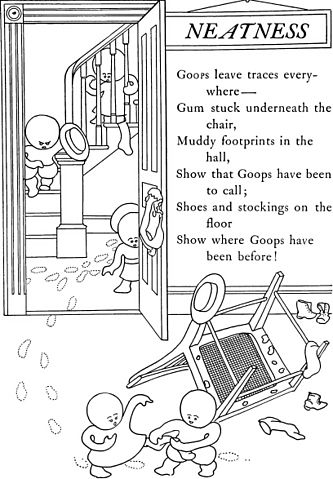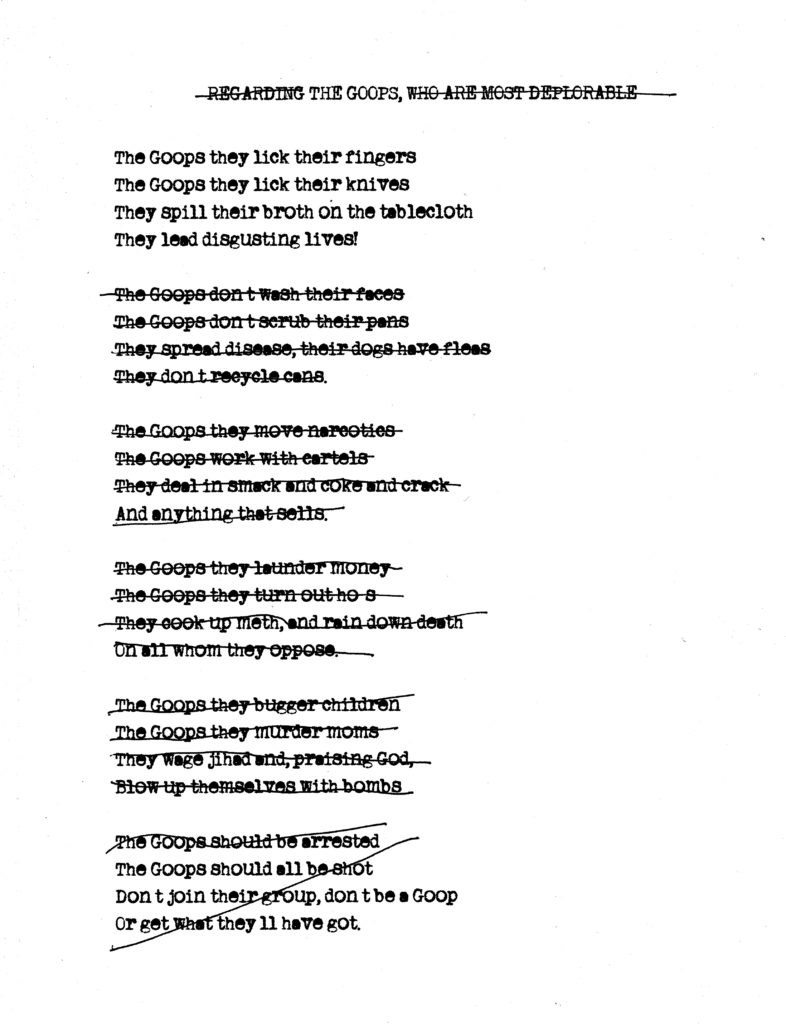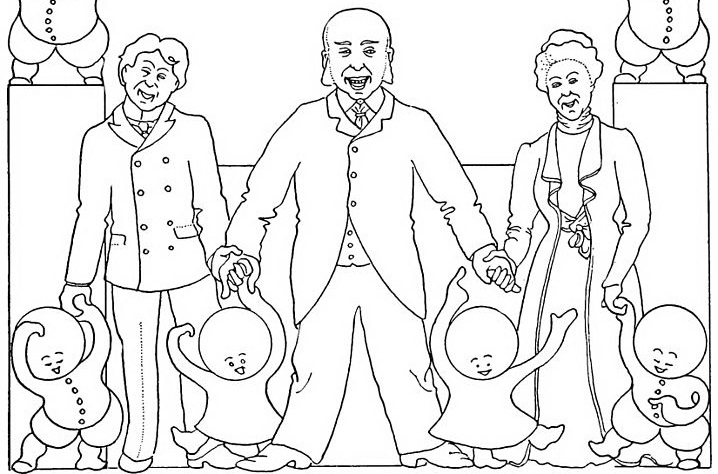If, as the cliché has it, “writing is re-writing,” then publishing is re-publishing. No, wait. Re-printing? That doesn’t look right. Hang on.
Okay: Rather, publishing is editing. And few documents illustrate the crucial importance of editing as well as the following, an original typescript of what appears to be a first draft of the very first poem about “The Goops.”
Many readers of a certain age, and a certain amount younger and a certain bit older than a certain age, will remember having “The Goops” read to them in childhood. The first of this series (The Goops and How to Be Them), written and illustrated by Gelett Burgess, appeared in 1900. The Goops, who were featured both in books and comic strips, were a particularly ill-mannered group of children, whose slovenly habits and discourteous demeanor were highlighted, quite explicitly, as examples of how not to behave.
It was Burgess’ genius to depict the Goops as possessing enormous, spheroid heads, in stark contrast to the more realistic-appearing grownups (and well-behaved children) around them.

Of particular interest in the text reproduced below is the mounting extremity of its descriptions of appalling Goop behavior. The first stanza is more or less identical to the one finally published, that most will recall. The author—or the editor, or the publisher, or at least someone—seems to have had serious doubts about the next five. They are struck through in their entirety.
Some have suggested that these excisions were made by Ezra Pound, who in later years would go on to perform just such stringent editorial services for T.S. Eliot in The Waste Land. As Pound was born in 1885, he would have had to have worked on “The Goops” when he was 14 or 15. It seems improbable — although the summary removal of so much material is indeed suggestive of Pound’s impatient, peremptory — but always effective — editorial technique.
In any case, thanks to this document, retrieved from a curio chest in an attic in Portland, Maine in 2014, we see a beloved childhood classic in its original form, and may marvel anew at how, in literature as in the plastic arts, what one leaves out is as important as what one puts in.

